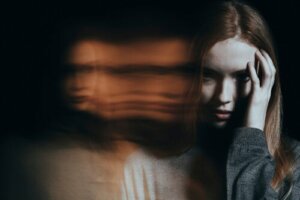Hearing Voices and Seeing Things

Hearing voices and seeing things are fascinating phenomena. In fact, the dictionary describes hallucinations as subjective sensations not preceded by impressions on the senses. Why do they happen, though?
Firstly, the word “hallucination” was described by Lavater to refer to “ghosts and spirits that walk at night“. Later, someone used the term to describe the behavior a person understands as adapted but that doesn’t make sense to an observer and they perceive as negligent.
Thus, in the technical sense, the aforementioned term first came about in 1837. In fact, French psychiatrist Jean Etienne Esquirol (1772-1840) published his textbook called Des Maladies Mentales around that time, and in it, he clearly described its meaning.
In short, one can describe hallucinations as perceptions that occur in the absence of a corresponding external stimulus. Furthermore, they can involve any of the perceptual stimuli. Furthermore, there are several types of hallucinations: auditory, visual, tactile, olfactory, and gustatory.
“Kings are not born: they are made by artificial hallucination.”
-George Bernard Shaw-
Seeing things – why do humans hallucinate?
Firstly, not all patients who experience hallucinations have a psychotic disorder. Thus, it seems the reasons people hallucinate might be both psychiatric and non-psychiatric.

Auditory hallucinations
Auditory hallucinations are also known as paracusia, perceptions of sounds in the absence of identifiable external stimuli. Furthermore, these the possible causes of this type of hallucination:
- Peripheral injuries.
- Apoplexy.
- Middle ear disease.
- Inner ear disease.
- Auditory nerve disorder.
- Post-traumatic stress disorder (PTSD).
- Psychotic depression.
- Dissociative identity disorder.
- Mania.
- Delirium.
- Syncope.
- Alcoholic hallucinosis.
- Schizophrenia.
- Arteriovenous malformations.
- Temporal lobe epilepsy.
- Pontine lesions.
- Central nervous system disorders.
Thus, approximately 60 to 90% of people with schizophrenia and about 80% of people with affective psychosis experience auditory hallucinations. Furthermore, these are usually complex in the case of auditory hallucinations in psychosis. For instance, hearing voices is a common manifestation.
Thus, a person might hear two different voices speaking about them in the third person. Also, they perceive the voices as coming from inside or outside their head. In addition, some affected people hear their own thoughts aloud.
Seeing things – visual hallucinations
These manifest as visual sensory perceptions in the absence of external stimuli. Furthermore, these false perceptions can consist of formed images, such as people or non-formed images such as lights.
This type of hallucination can occur in numerous disorders:
- Neurological disorders.
- Epilepsy.
- Migraine.
- Optic nerve disorders.
- Hemispheric lesions.
- Brain stem injuries.
- Glaucoma.
- Narcolepsy.
- Ophthalmological conditions.
- Retinal affections.
- Metabolic and toxic conditions.
- Hallucinogens.
- Mood disorders.
- Retinal disease.
- Enucleation.
- Choroidal disorder.
- Macular abnormalities.
- Cataracts.
- Drug and alcohol withdrawal syndrome.
- Toxic-metabolic encephalopathy.
- Conversion disorders.
- Sensory deprivation.
- Sleep deprivation.
- Hypnosis.
- Intense emotional experiences.
The DSM-IV-R considers visual hallucinations a main symptom for certain psychotic disorders. These include schizophrenia and other schizoaffective disorders.
Olfactory hallucinations
These involve smells and don’t come from a physical stimulus. A person will experience them if they’re afflicted by various psychiatric conditions, such as:
- Schizophrenia.
- Depression.
- Bipolar disorder.
- Eating disorders.
- Substance abuse.
There’s also the case of patients who perceive they’re the source of an unpleasant odor, which is a syndrome called olfactory reference syndrome. Thus, people affected by this syndrome may tend to wash themselves excessively, abuse the use of perfumes or deodorants, and may even tend to withdraw from their social circle.
Gustatory hallucinations
Firstly, patients with this kind of hallucinations may experience salivation, thirst, or other taste disturbances. In addition, these hallucinations occur when the Sylvian fissure that extends to the insula is electrically stimulated.
This is because, just as with olfactory hallucinations, taste hallucinations are related to conditions in the temporal lobe and the parietal operculum.
Tactile hallucinations
These include the perception of the presence of insects on or under the skin and also the stimulation of pressure on it. Thus, researchers associate them with substance abuse, toxicity, and withdrawal. Furthermore, these types of hallucinations are characteristic of cocaine or amphetamine poisoning.

Seeing things – somatic hallucinations
Although you may not know it, patients who have somatic hallucinations present perceptions of abnormal bodily sensations or physical experiences. For example, a person might feel like they don’t have a stomach when they eat. Researchers associate these experiences with the activation of the following brain areas:
- The postcentral turn.
- The parietal operculum.
- The insula.
- The lower parietal lobe.
Finally, it seems that people may hallucinate for many different reasons. Thus, depending on the type of hallucination, one can attribute it to one or other disorders. In addition, different areas of the brain or others will activate depending on the type of experience. Therefore, the reasons why people hallucinate depend largely on whether the symptoms that lead them to this phenomenon are present.
All cited sources were thoroughly reviewed by our team to ensure their quality, reliability, currency, and validity. The bibliography of this article was considered reliable and of academic or scientific accuracy.
-
Siegel, R. K., & West, L. J. (1975). Hallucinations: Behavior, experience, and theory. John Wiley & Sons.
-
Esquirol, J. D. (1837). 1845. Mental Maladies: Treatise on Insanity.
-
Cummings, J. L., & Mega, M. S. (2003). Hallucinations. Cummings JL. Clinical neuropsychiatry. New York: Grune & Stratton, 19851221-233.
-
Norton, J. W., & Corbett, J. J. (2000, February). Visual perceptual abnormalities: hallucinations and illusions. In Seminars in neurology (Vol. 20, No. 01, pp. 0111-0122). Copyright© 2000 by Thieme Medical Publishers, Inc., 333 Seventh Avenue, New York, NY 10001, USA..
-
Kaplan, H. I., & Sadock, B. J. (1989). Typical signs and symptoms of psychiatric illness. Comprehensive textbook of psychiatry, 1, 538-542.
-
Cummings, J. L., & Miller, B. L. (1987). Visual hallucinations: clinical occurrence and use in differential diagnosis. Western Journal of Medicine, 146(1), 46.
-
SHAPSE, S. N. (2008). THE DIAGNOSTIC AND STATISTICAL MANUAL OF MENTAL DISORDERS i.
-
Ropper, A. H., Samuels, M. A., & Klein, J. P. (2009). Disorders of smell and taste. Adams and Victor’s principles of neurology. 9th ed. New York, NY: McGraw-Hill Companies, 216-224.
-
Ropper, A. H., & Samuels, M. (2009). Epilepsy and other seizure disorders. Adams and Victor’s principles of neurology, 9.
-
Capampangan, D. J., Hoerth, M. T., Drazkowski, J. F., & Lipinski, C. A. (2010). Olfactory and gustatory hallucinations presenting as partial status epilepticus because of glioblastoma multiforme. Annals of emergency medicine, 56(4), 374-377.
-
Nurcombe, B., & Ebert, M. H. (2008). The psychiatric interview. Ebert MH Nurcombe B, Loosen PT, et al, eds. Current diagnosis and treatment: psychiatry. 2nd ed. New York, NY: McGraw-Hill Companies, 95-114.
-
Lewandowski, K. E., DePaola, J., Camsari, G. B., Cohen, B. M., & Ongür, D. (2009). Tactile, olfactory, and gustatory hallucinations in psychotic disorders: a descriptive study. Ann Acad Med Singapore, 38(5), 383-385.
This text is provided for informational purposes only and does not replace consultation with a professional. If in doubt, consult your specialist.








